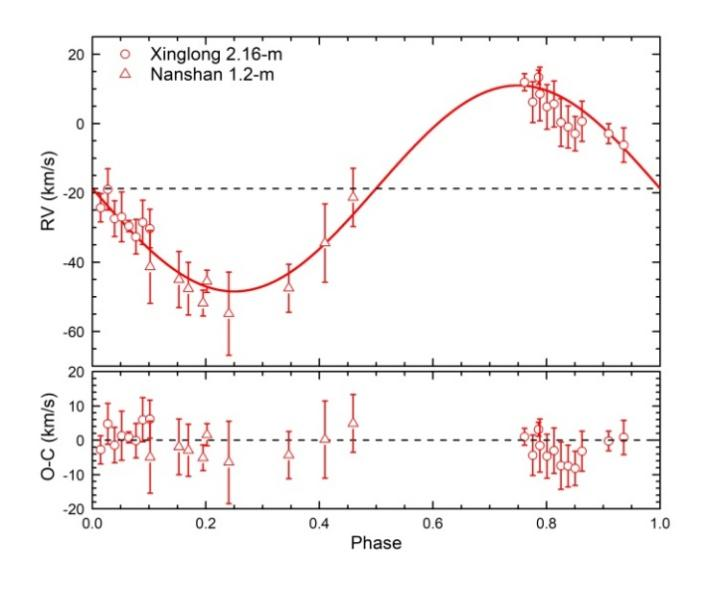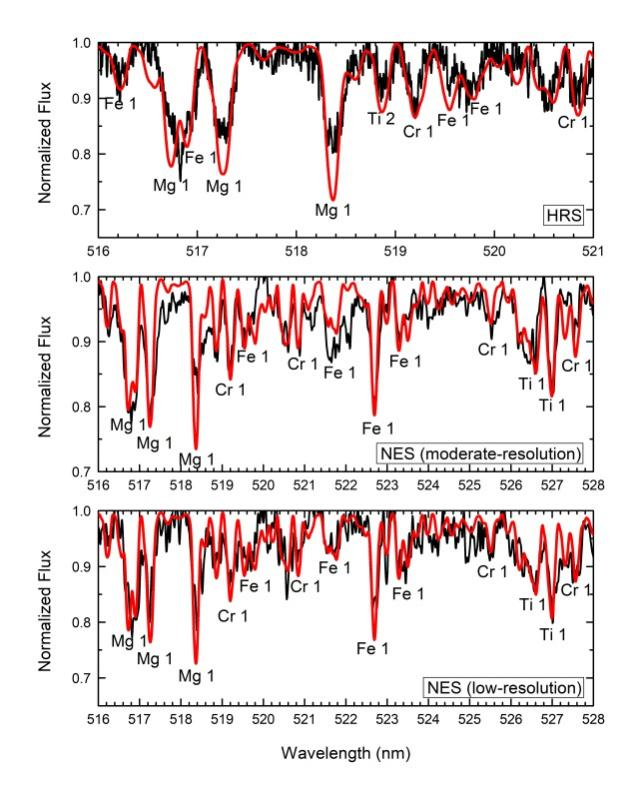Binary systems are ideal for accurately identifying the basic physical parameters, such as mass, radius and luminosity, of the stars. In particular, pulsating variable stars are of great significance, as they offer means for detecting the stellar internal structure. The studies of binary systems with δScuti star can lead to the accurate derivation of the basic physical stellar parameters, and provide additional constraints for the examinations of asteroseismology of pulsating components. It can also be used to study the effect of binary stars on stellar pulsation.
Dr. FENG Guojie from the Optical Astronomy Research Laboratory at the Xinjiang Astronomical Observatory (XAO), and the collaborators, carried out the time-domain spectroscopic observation of KIC 10417986 with the Nanshan 1.2-m Optical Telescope and Xinglong 2.16-m Telescope. They obtained the orbital parameters and stellar parameters of the binary system for the first time. In addition, the pulsating frequencies and their modes were successfully extracted and preliminarily identified by analyzing the light curves from Kepler.
The researchers showed that KIC 10417986 is a single-line spectroscopic binary star through spectral analysis, and derived the orbital parameters by using the radial velocity fitting (see Figure 1). The orbital period was found to be about 0.84495 days, which is different from the possible orbital period of 0.0737 days obtained from the Kepler light curves. The reliable orbital period provides strong assurance for identifying the pulsation frequencies correctly.
The primary atmospheric parameters, such as the effective temperature, surface gravity, metallicity and the rotation velocity, are determined by the synthetic spectra fitting technique. The comparison between the observed spectrum and the best-fitted synthetic spectrum are shown in Figure 2. From the single-lined nature and mass function of the star, the derived orbital inclination is 26 ± 6°, and the mass of the secondary is about 0.52 M⊙ suggesting that it should be a late-K to early-M type star.
In addition, fourteen frequencies were extracted from Kepler light curves. From them, six independent frequencies in the high-frequency region were identified as the p-mode pulsations of δ Scuti star, and one independent frequency in the low-frequency region (f2 = 1.3033 c/d). The latter is probably the rotational frequency due to the starspots, which indicates the magnetic activity and the surface differential rotation of the primary component.
The results are published in the Research in Astronomy and Astrophysics (RAA, 2022, 22 (10), 105,005).

Figure 1. The radial velocity curves of the primary of KIC

Figure 2. Comparisons of the fitted spectra (red line) and the observed spectra of KIC 10417986 (black line). The parts of the spectra observed by HRS of the Xinglong 2.16m Telescope, NES (moderate-resolution) and NES (low-resolution) of the Nanshan 1.2m Telescope are shown from the top to bottom panels, respectively.
Contact: FENG Guojie
Xinjiang Astronomical Observatory, Chinese Academy of Sciences
Email: fengguojie@xao.ac.cn
Article link:https://iopscience.iop.org/article/10.1088/1674-4527/ac8b5c